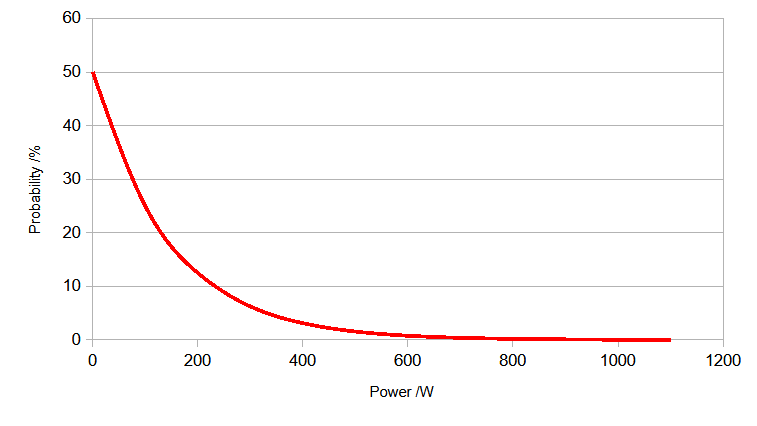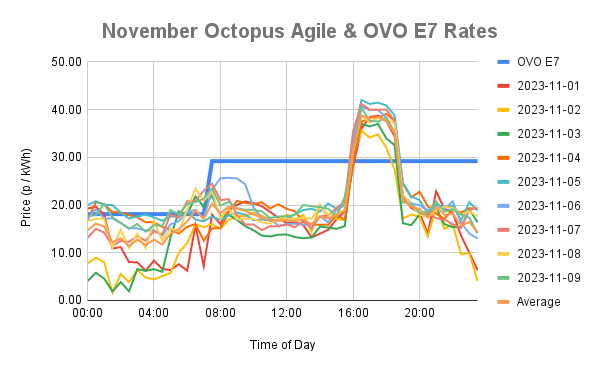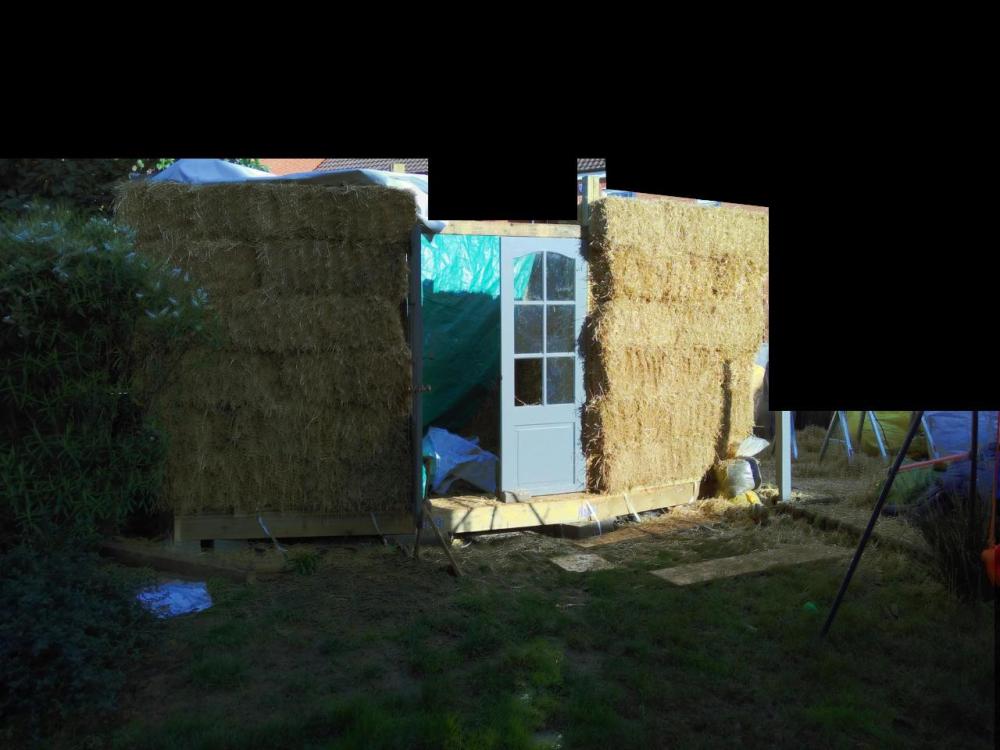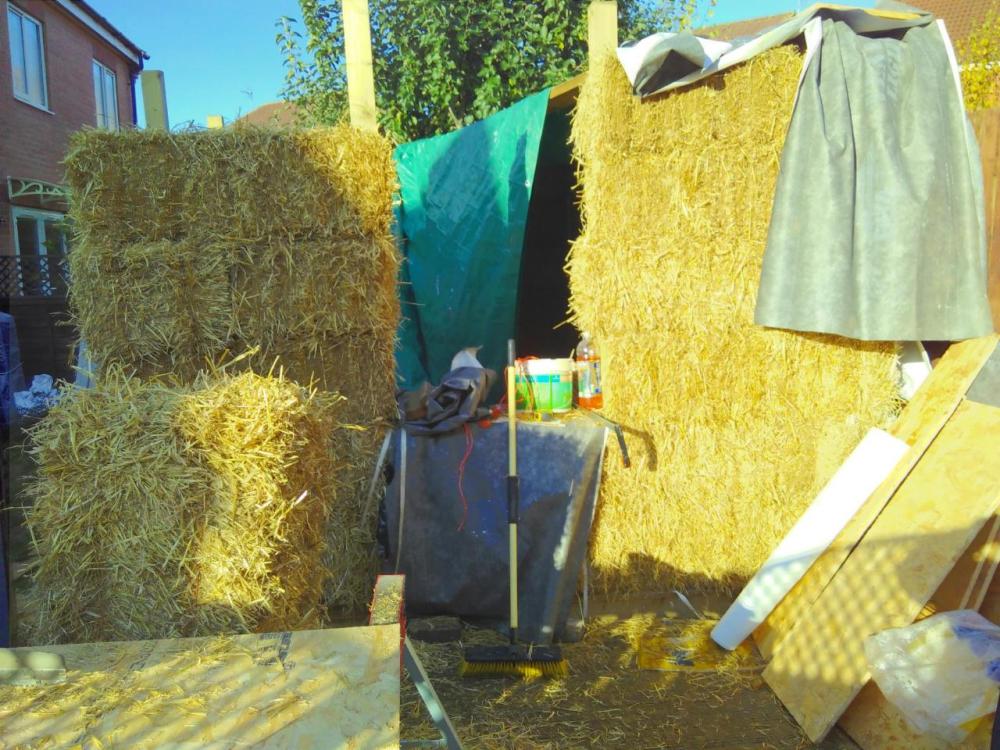Leaderboard
Popular Content
Showing content with the highest reputation on 11/09/23 in all areas
-
Just been taking a look on the battery stats and heat pump energy usage. GivTCP set the charge last night to 62% (my defined min for this time of year), 00:30 to 07:30 is E7 period, so during that period the battery does not contribute to the house, everything is taken from the grid. Has been a pretty good solar day, 12.9kWh generated. During the E7 period, we imported 17.55kWh, for charging the battery, running heat pump and other house stuff (MVHR, treatment plant compressor etc). By 2pm the battery is at 100%, solar generation has almost stopped by 3pm and battery starts to discharge to the house. We exported 3.5kWh (this will go to hot water next week) From the ASHP electric meter (last 24hrs) we used 15kWh (last night down to zero, today although sunny didn't go over 6 deg), currently 2 degs outside. Heat pump has just ran for 2.5hrs straight with 2 defrost cycles. After cooking our tea, we have 62% battery still remaining.2 points
-
If you do more than 2 way switching, i.e. if you want the same light controlled by three switches, then the middle one has to be an intermediate switch which is different and has 4 terminals. If it then happened that the intermediate switch had to be on the same switch plate and another switch controlling a different light then with most manufacturers you have a problem. Most manufacturers only sell single intermediate switches and the traditional way around that is buy "grid switches" where you buy a mounting frame and the whatever switch modules you need. but that limits your choice. The Scolmore Click are not exactly grid switches but you can unscrew the switch mechanism with a single screw and swap them from one switch to another enabling you to mix intermediate and normal switches on one plate.2 points
-
OSB can be airtight, it depends on the thickness and how well made it is. I would be very surprised if a thick SIPs panel wasn't airtight to the degree required for an airtightness test. With the the way the SIPs panels are joined I would have thought the purple paint wasn't really required. I achieved an average airtightness on my house of 0.47ACH without any airtightness tapes, membranes or paints. I just had 15mm OSB3 and 350mm Icynene foam. The window and door frames were sealed in the openings with two rows of Compriband and Soudal SWS foam. There were no openings in the walls or roof other than the two ducts for MVHR.2 points
-
In a simple case, half the time it is dark, so zero power happens 50% of the time. Dawn and Dust are low power, as are stormy days, so they account for the next 25%, then slightly brighter, accounting for 12.5%. The most powerful times i.e. greater than 600W, don't happen that often. Under 1% of the time (in this basic model), so about 87.5 hours a year. Plot that and you get a nice decaying line as the power increases. Remember that power is not energy. To get the energy, you need to multiple by the hours. As there is 8760 hours in a non leap year, you can (maybe with a bit of adjustment for local weather) work out the probable yield.2 points
-
Hi there - a newbie in here. I am joining here is to look for some solutions to my boiler controller. Let's see if I got luck in finding out the answer in here, many thanks1 point
-
As @Gus Potter mentioned we’ve cut many many many meters of firings to go on top of C section steel joist, diminishing in size front to back so that the roof deck for our new garage has the required fall. I shopped around and no one was really interested in doing it for me and ultimately I’m pleased about that, quality control when you’re doing it yourself is so much easier. It took time, but that was mine to give. With the drawings from a certain SE and good old SketchUp I knew exactly how much scuff (or taper) I needed on each firing so that the boards laid flat on the firings instead of just sitting on the high point of each firing. For us it’s was 0.7mm - we settled for 1mm as it was easier to measure! So, for example, say one of our firings needed to be 45mm thick on the uphill side, it needed to be 43mm thick on the downhill side. I measured the 44mm and 43mm on either side of the timber, drew a line and then lined up the skillsaw with the pencil line, did a few test cuts close to the line on the waste side of the timber to confirm the angle of the saw and then set the guide and cut away. The set angle remains the same for all firings. Our joists are equally spaced and each firing was 7mm bigger than the previous so I just moved the skillsaw guide by 7mm for the next firing strip. It worked really well, each sheet of OSB sits squarely on all the firing strips it touches and has the required fall. Hope that helps.1 point
-
Bright give you access to the DCC data so would cover this period were you so inclined. There's others available but I haven't used them.1 point
-
They do look nice and you have to go with what you want, at least you know that they are a good price and unlikely to find anything similar much cheaper1 point
-
A single layer of 450 GM/m2 mat is about 1mm thick. I would always recommend 3 layers on a flat roof. Where it overlaps you can get a ridge, but if all the layers have the staggered overlaps then it is reduced. You can also get rolls of mat that has one cut edge and one torn edge, overlapping the cut and torn by about 50mm, and some decent consolidation makes it virtually bump free. If it really is an issue, then 5 minutes careful angle grinding takes the ridge out. It really comes down to the skill of the laminators.1 point
-
Agreed. And the tubes are more flexible. But you'll be using it only twice.1 point
-
1 point
-
Properly layed up GRP can handle standing water for a very long time. If you think about what those sewage tanks put up with, wee and poo one side, ground water the other. They survive. So reducing the fall a bit should not be a problem. Use ply against the GRP as it is easier to lay up onto. Takes less resin as well.1 point
-
1 point
-
1 point
-
Well I've just switched to Octopus Agile. It proved relatively painless and far quicker than I expected: 4th Nov. I had to request an E7 tariff quote and accept this to get the process rolling. 5th Nov. Both OVO and Octopus confirmed that the switch was under way. I had to do an old fashion eyeball meter reading 8th Nov. First day of Octopus supply. 9th Nov. Octopus API access to my Secure SMETS1 meter confirmed, and half-hourly data being captured 9th Nov. Requested cut-over to Agile tariff. Confirmation of the switch by email return. My account details confirm that I am on the Agile tariff. So now I've got to make the changes to my heating algo to make use of the new ToD tariff, but this merits its own blog post.1 point
-
What’s the height? 3 battens won’t be enough. How do you stop the breather membrane getting all flappy. ?? How do you stop insects eating the breather membrane. ?? On the whole your idea needs far more thought I would get it all rendered, but the bit that is to be clad, just do the base coat and mesh, paint this Matt black, then fit the battens and cladding. Just my first thoughts.1 point
-
Oh yeah, it's been around for a while. At around 2:30 you get a quick look at the actually interesting part of the system - "B-CORE": http://en.broad.com/ProductShow-76.aspx . It's not shipping containers stacked on top of each other, in short.1 point
-
1 point
-
Impressive. But it might have taken them a bit longer if work at height risks had been properly managed. Plenty of guys wearing harnesses but not clipped onto anything.1 point
-
Very commendable, just shows what can be done, I have my doubts about the longevity of tapes 🤷♂️1 point
-
Inductance/capacitance between wires is quite common. You can think of it as an inefficient transformer. Uncoil the wires from the iron core, lay the side by side, pop some AC power through one and you will get some power in the other wire. It is how Marconi got radio signals across the Atlantic. It is a useful feature of oscillating circuits. A double pole switch will sort it out.1 point
-
1 point
-
I found this article both interesting and fascinating https://www.theguardian.com/environment/2023/nov/08/how-the-dutch-went-down-the-toilet-looking-for-heat-sewage1 point
-
I used fibre reinforced easy flow concrete in the end, so stapled the UFH pipes to the insulation. much easier and cheaper than using rebar mesh1 point
-
There is an old storyline in the Archers about5 Brian Aldridge, as a young man, allowing some containers to be buried on his land. 30 years later, they leak and contaminate the River Am. He had to sell the family home and some of his land to pay for it all. Farmers eh, custodians of the landscape, making the countryside better for future generations. If you are certain that you are not liable, in any way, for this, wait till his cheque has cleared and report the wanker.1 point
-
I used hardie board behind the toilet to reduce the risk of flex. But Jackoboard everywhere else in our wetroom/shower areas. Did so on the recommendation of the tiler and a good friend who’s been in the game for a long time. It was enough to convince me! Elsewhere in the bathrooms I used moisture resistant plasterboard1 point
-
Is there an option for an in line waterproof plug (like the type you get on a lawnmower) to extend to a sensible place? My personal preference when having to put Sockets under sinks and baths, is to put them on single unswitched Sockets. Logic being that is one less area for water to get into the back box, and one less risk. (if a socket did get wet, the instinct is to switch it off which means touching the water which could potentially be live)1 point
-
Yes they are my go to choice for basic stuff. They are cheap but good quality. A lot of our house has them. One of their hidden tricks, id the light switches you can remove the switch modules, handy if you want to mix intermediate switches with ordinary switches without having to go to a full grid system.1 point
-
I've watched the first part so far and it is spot on. Reply today from LABC "Thank you kindly for your email to building control. I have taken this off of our administration team so that I can explain a bit more detail. You are correct from your email that the works are normally enforced from a local authority building regulations. For example, if an extension had no application. This would be down to us to enforce as the LABC. We would not be able to govern another building control body, such as xxxx xxxx. If you feel there has been a discrepancy or you wish to further your concerns from your complaint, the CICAIR are the governing body of all approved inspectors within England. Therefore, this would be the port of call to obtain further concern. We would not be in a position to involve ourselves between yourselves and xxxx xxxx for example. I hope this helps xx, and apologies we can not be of more help. Kind Regards" We will refer this onto CICAIR but don't hold any hope of a resolution through those channels. --------------------------------- The developer and their main contractor came to visit on Thursday for an appointment specifically to look at the missing insulation. They turned up thinking it was for something else, and end of defect period (EOD) inspection for their main contractor, not our warranty defect period as that runs until July 2024. They have used these EOD inspections for their main contractor to convince most other owners that their defect period is now over, closing the portal with which to report defects and many other residents footing the bill for their own repairs whilst still inside their 24 month defect period. The developer initally lied to us verbally when I questioned them during an earlier defect inspection on how long our defect period is. This is having also phoned us up and aggressively told us we were reporting too many defects through the portal and that they would come visit us and explain what a defect is. Needless to say everything I showed them during the visit they agreed was a defect. I also asked them in writing how long the defect period is which they ignored, but I did get written confirmation from our warranty provider that it is 24 months as opposed to the 12 months our developer was claiming. When they arrived for Thursdays visit they had also lost the list of defects that in March we had previously agreed with them that they were going to rectify. We hadn't taken enough time off work nor organised the house to conduct a broader whole house inspection, so we asked them to rebook but insisted the use our ladder and torch to inspect the insulation in the loft. They took a few photos and said they would look up what should have been there. They wouldn't even go entirely into the loft they just leaned through the hatch for a while. From the March list of 30 odd defects they have so far fixed 1, despite giving us a 28 day timeframe and repeadted emails chasing them. Needless to say we think they are an incompetant and lying bunch of cowboys. I will name and shame once this is all resolved. We've put to the developer we would like them to hire a chartered surveyor, of our choice out of a selection of 3 with no business relationship to them, to draw up a schedule of remediation works for all the main issues with the house (insulation, bowed walls, unlevel screed on ground floor, and significantly creaky floors on 1st and 2nd floor), for the surveyor to also inspect and sign off the remediation works once completed. If they offer anything less we will escalate through their complaints procedure, then the warranty provider and then the financial ombudsman if neccessary. Using the independantant surveyor is one of the resolution models the ombudsman service use, which we have told the developer in the hope they will actually get on with it. However, their main tactics so far seem to be delay and ignore in the hope that owners give up, so we are expecting to have to spend several months escalating this to get any progress. They are frankly a bunch of crooks that thanks to little regulation narrowly stay on the right side of the law. The whole industry needs a shake up.1 point
-
Soil pipes leaking is very rare, they are sealed pipes, so the toilet/sink would leak and not the pipe (if installed correctly). Usually box in with two layers of acoustic plasterboard and some acoustic insulation inside. Bad call from the architect placing in the living room though.1 point
-
Been a while since my last update - lots of rain. We had a clear few days this weekend though, and I managed to make some progress. -> (scuse censorship; imagine it's a starry night sky) That's all the bales up now, although I'm eyeing the left corner a bit unfavourably; I *think* it's OK but there's a bit of an overhang situation going on, and the fourth course particularly is dodgy. Worst case, I'll have to take it down and re-size a few bales, but it might be within trimming range in-situ. Worth a try, anyway. Similar for around the door and window posts - they get vigorously trimmed before the lime plaster goes on, which should improve how it looks significantly. There are still 24 bales in the garage - so I over-ordered by about a third. I've got some wall-shaped projects in mind for them come spring, though, they won't go to waste. Next is the wallplate/roofplate - just another timber box beam round the top of the bales, only harder because it's more than two metres up ^^. I got the back wall section put together today, and it's up there - weight was a problem so I ended up doing the timber ladder on the ground (40kg?), getting that up, cladding it with the OSB (30kg/side?) then flipping it so that side was on the bottom. A bit sketchy, honestly. The remaining sections are shorter, so I might be able to get more done on the ground for them. Regretting not at least cutting the timbers back when I had access to the baseplate now, of course, but if I'd spent time on that back then, I might still have straw to do now. I've explored the hip roof idea a bit more but increasingly feeling like I just don't have the vertical space for it. So probably a flat roof over winter, keep an eye on it , maybe explore guy ropes if we get any wind forecasts above 80mph. The roof deck *looks* simple enough, timber-wise - 2x5 joists, use firrings to get the fall, T&G OSB on top of that and finish with EPDM. Maybe add insulation under the joists later. More rain is forecast, but the walls are all tarped up and should be fine like that indefinitely. I can build the rest of the bits of wallplate in the half-empty garage and uncover one wall at a time whenever there's a clear moment to put one up.1 point
-
I wonder if they have hidden the rainwater pipes inside the columns? The cap plate at the top would be like a polo mint.. at the bottom the pipe exists via vertical slot or something along these lines. Would be interesting to see if that works structurally, probably would as the loads are pretty low if using say a 10 inch circular hollow section.1 point
-
Impressive yes. Add 2 columns and bring them forward and save £80k. It would also be more 'honest' as they say. Harnessing the forces of nature instead of challenging them. On the other hand it's handy for storing left over timber, and for wildlife. I know I'm a bit boring on the subject but, where does the rain go?1 point
-
thinking about this as a sip build is irrelevant, there will be so little in the way of sip construction in that design. 50% of it will be steel and concrete, 20% glass, then do whatever you want for the remainder. I agree with others, a couple of extra columns will save you multiple of thousands in engineering design and steel and concrete. Cantilevers are nice , but not for what they cost.1 point
-
Looks nice. Very LA hills. I double down on the overheating cautions and also the heating energy requirements for all that glazing. Good windows are still 5 times worse than average walls in terms of heat loss.1 point
-
Looks nice. See you have two supports for the balcony section, increase to four and the huge expense to cantilever vanishes. Not sure how you get passivhaus energy performance with all that glazing? You are also going to need to add plenty of additional insulation to the sip to get to passivhaus standards, so somewhat defeats there advantage. Although you have an overhang for shading watch out for low eastern and western sun, as it will find its way under and overheat the house, if you don't plan well.1 point
-
1 point
-
Update, after lots of messing about to get a smart meter working, went E7, but since this thread started I have a battery also. So currently 90%+ of the electric is coming from E7 and only a couple of kWh at full price, for whole house use including heating via an ASHP.1 point
-
So eventually got E7 tariff yesterday, after the failed attempt to getting a smart meter working. Also got the Home Assistant GivTCP, automation for the battery inverter working (been trying that for the past week). It reads the expected solar production, from a solar forecasting site, it also collates your usage data and sets the battery state of charge level accordingly, to only cover what's required. Yesterday the state of charge was set to 64%, we didn't run out of battery energy before the next charging period. Last night the charge was up to 78%, as less solar is expected. Have the ASHP charging the floor in the low tariff period also, at the moment it's running anywhere between 3 and 5 hours, running off the time clock in the thermostat, basically we bump the demand temperature up 1 degree at the start of the low cost period and back down to normal target temp about 5 hours later, if the ASHP needs to run longer on very cold days it can. Yesterday we used 0.5kWh peak electric. Everything else was off peak and from the battery and a little solar. The 0.5kWh is the small amount the battery seems to send back to the grid all the time, not sure if it's as a reference value or what? Our average winter electric consumption last year was 13kWh a day with gas heating. We have added a garden room, which my wife uses daily and that it is heated by an electric heater, yesterday it used 5kWh. Yesterday our electric consumption including our normal house usage, heating with the ASHP, and heating the garden room, we imported 18.7kWh @ 15.16p per kWh.1 point
-
+1 to the above, insulate, insulate, insulate (and airtight) then whatever source your heat (preferably ASHP) your running costs will me minimal.1 point
-
So a new build, embrace the chance to fit a LOT of insulation, properly designed, make it air tight, fit MVHR and UFH and you will have a house that needs very little heat input. Then a small ASHP will be all you need. It will be cheap to run, and no oil or gas tanks to bother about and no boiler servicing. While you are at it, fit some solar PV on your roof and your running costs go down even further.1 point
-
Stick some masking tape or tippex etc on your bubble, find a pretty level or plumb surface, put level on surface and mark edges of bubble, spin 180 degrees and mark again, difference between your two sets of marks is true and you have more accurate lines. The bubble size changes with temp, hence lines usually being too far apart in our climate1 point
-
The bottom line is that water treatment (by water companies) allows for either enough residual disinfection to ensure that there is no risk of microbial growth in pipes etc with no flow for some period of time (i.e. when people go on holiday in summer and all the pipes in their roof space sit at relatively warm temperatures for a week or two) or they disinfect the water to the point where pathogens are eliminated. Legionella is an aerobic bacteria. It cannot survive, let alone multiply, in anaerobic conditions. All known cases of legionella effecting humans have come from the bacteria being breathed in, as a consequence of it being released in a mist or spray of water where the concentration of bacteria in the aerosol was sufficient to overcome the bodies defences. The vast majority of legionella cases have resulted from open spray evaporation water cooling or humidification systems, often associated with office building or hotel air handling systems, where the cooling water was not properly disinfected. The bacteria is pretty low risk, as it cannot form spores, therefore cannot bypass water treatment disinfection systems. Ultrafiltration in a water treatment plant will very easily take out Legionella Pneumophila. This means that a closed system, containing disinfected water, cannot have any bacteria within it, therefore there can be no risk that they will multiply and cause an infection risk from using a shower (the means of infection is always breathing in an aerosol that contains a sufficiently high bacterial load as to cause this form of pneumonia). To put this into perspective, like other forms of pneumonia, infection can be spread from one infected individual to another when the infected individual coughs out an aerosol containing the bacteria. Out of the ~300 cases per year of pneumonia in the whole of the UK that can be positively identified as having been caused by Legionella Pneumophila, around 120 of those were definitely people who acquired the infection on holiday overseas. I cannot find a single case where the source was identified as a domestic hot water system - not one. Far and away the highest risk comes from evaporative air cooling systems, where the water feeding the evaporative cooler has not been adequately treated. The total risk of infection in the UK is currently a bit over 5 cases per 1,000,000, with most of those having either contracted the disease overseas or having been infected by someone that has been infected overseas. Most infections from overseas are in people returning from Spain, most probably because evaporative air coolers or humidifiers are still commonly used in the air handling systems of hotels, office buildings etc. I was amazed that there wasn't a massive outbreak following the Barcelona Olympic Games, as they used massive open air evaporative coolers to try and reduce the ground level air temperatures, and these drew water from open lagoons in many areas. Given your position, @ProDave I'd not even bother thinking about legionella, for several reasons. Firstly, it's unlikely that your untreated source water is infected - it will be too cold and the pH will probably be on the low side. The source water will also be poorly oxygenated, I suspect, given where it comes from. Secondly, you have the advantage of an ultrafiltration water treatment plant, which is easily going to remove bacteria as large as Legionella Pneumophila. Finally, you have a sealed hot water system where there is no possibility at all of airborne bacteria entering before the hot water storage tank.1 point
-
There's no risk unless air can get at the water before the hot tank. The legionella problem is caused primarily by airborne legionella bacteria getting into a water supply post-treatment and then multiplying.1 point
-
Perhaps a bit of a basic point, but this is a sealed system, isn't it? If so, then there's no way any airborne bacteria, like legionella, will be able to get into the hot water tank. It's different for a vented hot water tank, as it's possible for legionella to get in via the fairly open cold water tank that fills it, which is why you need to periodically heat up the hot water tank to kill anything off. I can't see the point with running an anti-bacterial cycle on a sealed system. It's a bit like our 300 litre sealed pressure vessels. The incoming water is disinfected and bacteria free, so nothing grows in them, even though they could get up to outside air temperature in warm weather, and that's inside the temperature range where legionella can grow. Legionella is primarily an airborne pathogen, so if no part of the system is open to air then there isn't really any risk.1 point
-
Good shout, yes, I will consider the windows positions and sizes to gain the best solar gain, thank you. FF0 points
-
Farmers usually like to shoot or poison things. Obviously shooting would not work.0 points
-
I worked at a caravan dealer, washing the vans on weekends for a bit of cash. All their bangers (£1000 and under, i.e. the ones Joe Public wouldn't touch) would get sold to highway construction workers in bulk. They were for the workers to live in whilst working on new roads and when they were coming to the end of the job, they'd get flattened and dumped under said road. Apparently there's a fair few under the M18...0 points
-
0 points
-
0 points
















